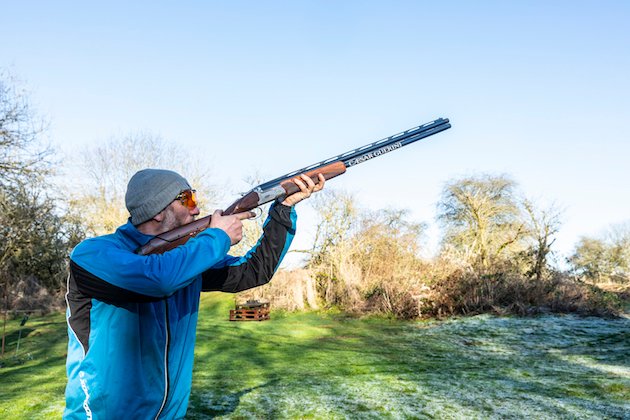Revitalize Your Game: How to Get Back into a Sport After a Break
Introduction
Returning to a sport after a break can feel both exciting and overwhelming. Whether you’ve been sidelined due to an injury, busy schedules, or just needed some time away, getting back on track requires a strategic and mindful approach. In this guide, we’ll explore everything you need to know about how to get back into a sport after a break, from assessing your fitness level to setting realistic goals and managing mental blocks. Follow these steps, and you’ll find yourself back in action safely and effectively.

Assess Your Current Fitness Level
Before you dive back into your sport, it’s important to understand where you currently stand in terms of fitness. Your body has likely changed during your break, and rushing into strenuous activities can lead to injury or burnout. Here’s how to assess your fitness:
Self-Assessment
Take a moment to evaluate your general fitness. Consider the following:
- Endurance: Can you walk or jog for extended periods without feeling out of breath?
- Strength: How do your muscles feel after light exercises like squats or push-ups? Are you able to lift weights you could manage before the break?
- Flexibility: Are you able to stretch to the same range as you did before?
By honestly assessing your fitness, you can identify areas that need work before you get back into more intense training. For example, if your endurance has decreased, focus on improving cardiovascular fitness first. If strength is your weak point, prioritize resistance training.
Consulting a Professional
If your break was due to an injury, or if you’re uncertain about your ability to return to your sport, it’s always wise to consult a healthcare professional. A doctor or physical therapist can help assess your readiness and provide guidelines for a safe return. They may also suggest specific exercises to strengthen areas that might have weakened during your time away.
Start Slow to Build Up Your Base
One of the most common mistakes people make when returning to a sport after a break is jumping in too quickly. Your body needs time to adjust to physical activity again.
Gradual Progression
Start slow, focusing on low-intensity exercises that allow your body to re-adapt. This phase helps avoid overuse injuries and ensures you’re not pushing your body too hard too soon. Here’s how to gradually ramp up:
- Week 1-2: Focus on light cardio, stretching, and mobility exercises. If you’re a runner, this could mean walking or doing short jogs.
- Week 3-4: Increase the intensity slightly. If you’re returning to a sport like basketball, start with dribbling drills or light shooting practice.
- Week 5 and beyond: Add more sport-specific movements, but at a controlled pace. Start training at a moderate intensity and gradually work your way up.
This slow progression is key to reconditioning your muscles and joints without risking injury. The goal is to rebuild a solid foundation before tackling the full intensity of your sport.
Phased Approach
Create a training plan that spans weeks or even months. By breaking down your return into phases, you can ensure steady progress without overwhelming yourself.
Set Realistic Goals
When you’re getting back into a sport after a break, setting realistic, achievable goals is crucial for staying motivated and measuring progress. Here’s how to set effective goals:
Short-Term vs Long-Term Goals
- Short-Term Goals: These should focus on small, measurable milestones that you can achieve within weeks. For example, if you’re a tennis player, a short-term goal could be to complete 30 minutes of practice without fatigue.
- Long-Term Goals: These focus on bigger achievements, such as regaining your previous level of performance or competing in an event again.
Tracking Progress
Utilizing fitness apps or journals can help you track your progress. Record how you feel after each workout, monitor your stamina, and keep note of any pain or discomfort. This allows you to adjust your training as necessary and celebrate your achievements along the way.
Work on Technique
One of the biggest challenges when returning to a sport is relearning proper technique. Over time, bad habits can form, especially if you’ve been away from the sport for a while.
Relearning Fundamentals
Start by revisiting the basics of your sport. This might mean revisiting drills that focus on your form and technique. For example:
- For runners: Practice proper posture and running form to prevent injury.
- For swimmers: Work on stroke technique to improve efficiency and avoid overuse injuries.
Focusing on these fundamentals will help you avoid ingraining bad habits that could lead to setbacks later on.
Hiring a Coach or Trainer
If you’re unsure about your form or need specific feedback, consider hiring a coach or trainer. They can help you correct any issues with your technique and develop a personalized training plan tailored to your needs. A coach’s eye can also provide insight into areas for improvement you might overlook.
Listen to Your Body
Your body is your best guide when returning to a sport. While it’s important to push yourself, you should never ignore warning signs of fatigue or pain.
Recognizing Warning Signs
Common signs of overtraining or injury include:
- Sharp pain: If you feel pain in your joints or muscles that doesn’t go away with rest, it may be a sign of an injury.
- Fatigue: Extreme tiredness that doesn’t improve after rest might indicate you’re doing too much too soon.
If you experience these signs, it’s important to back off and give your body the time it needs to recover. Pushing through pain can lead to longer recovery times or permanent damage.
Rest and Recovery
The key to any training program is balancing effort with recovery. Ensure you’re giving yourself rest days to allow muscles to repair and rebuild. Focus on getting enough sleep and using methods like foam rolling, stretching, or yoga to help with recovery.
Recovery Tips:
- Get 7-9 hours of sleep every night to allow for optimal muscle repair.
- Hydrate well and incorporate anti-inflammatory foods like salmon, berries, and leafy greens into your diet.
Stay Motivated
Returning to a sport can be mentally challenging. It’s common to feel frustrated when progress seems slow. Here are some strategies to help you stay motivated:
Setting a Routine
Building consistency is key. Even on days when you don’t feel like training, sticking to a routine can help you stay on track. Set a training schedule that works with your daily life, and commit to it as much as possible.
Accountability Partners
Training with a buddy or joining a team can help maintain motivation. Having someone else there to cheer you on, or even push you when you’re feeling low, can make all the difference.
Celebrating Small Wins
Don’t wait until you’ve hit your long-term goal to celebrate. Acknowledge smaller victories, like completing a full workout or improving your endurance. This helps keep you motivated and reinforces your progress.
Nutrition and Hydration
What you eat and drink plays a significant role in how well you recover and how much energy you have during training.
Fueling Your Body
Proper nutrition supports your training and recovery. Here are some essential guidelines:
- Before Exercise: Eat a balanced meal 1-2 hours before training, including carbs for energy and protein for muscle support. A banana and peanut butter toast works great.
- After Exercise: Focus on protein and carbs to help muscles recover. A smoothie with protein powder, spinach, and fruit is a great option.
Hydration
Staying hydrated is crucial for performance and recovery. Aim to drink water consistently throughout the day, and consume electrolytes if you’re doing prolonged physical activity, especially in hot conditions.
Managing Mental Hurdles
Getting back into a sport after a break isn’t just physically challenging; it can also be mentally tough.
Overcoming Mental Blocks
If you’re nervous or anxious about returning to your sport, you’re not alone. Many athletes experience fear of failure, especially after a long break. Start small, set achievable goals, and be kind to yourself during this process.
Visualization and Mindset Techniques
Visualization can be a powerful tool to help you regain confidence. Spend a few minutes each day imagining yourself performing well in your sport. This mental practice can improve focus and help you feel more in control.
Cross-Training for Better Results
Cross-training is an excellent way to enhance your overall athleticism while giving your primary sport a break. Adding variety to your workouts can help improve flexibility, strength, and endurance, all of which contribute to better performance.
Complementary Exercises
Consider adding activities that complement your main sport:
- Yoga: Improves flexibility and mental focus.
- Strength Training: Builds overall strength, supporting all types of sports.
- Cycling or Swimming: Great for cardiovascular health without high-impact stress.
Balancing Rest and Activity
While cross-training, ensure you’re not overloading your body. Balance high-intensity days with low-impact activities to avoid injury.
Embrace the Journey
Remember, getting back into a sport after a break is a process. It’s important to stay patient and enjoy the journey. Celebrate each small victory, and don’t let setbacks discourage you.
While the path may not always be linear, with persistence, planning, and self-care, you’ll be back to performing at your best. Keep focused on your goals, listen to your body, and most importantly, have fun.
Conclusion
Getting back into a sport after a break is a journey that requires patience, consistency, and a strategic approach. By assessing your current fitness level, setting realistic goals, and gradually increasing your intensity, you can avoid common pitfalls and ensure a safe return. Focusing on proper technique, listening to your body, and giving yourself time to recover will not only help you avoid injuries but also enhance your overall performance.







